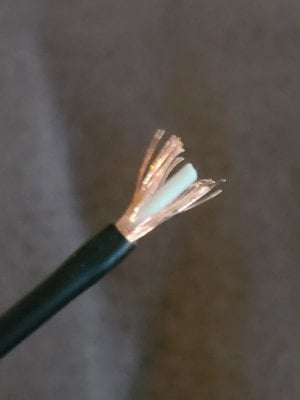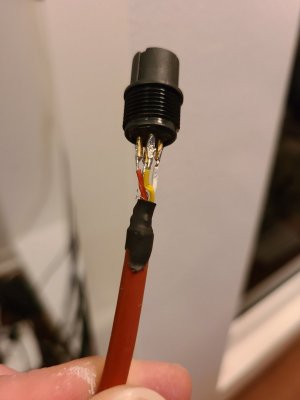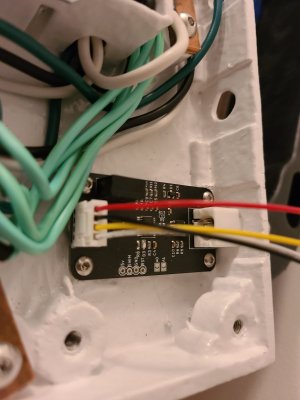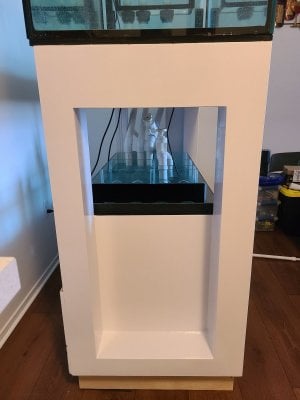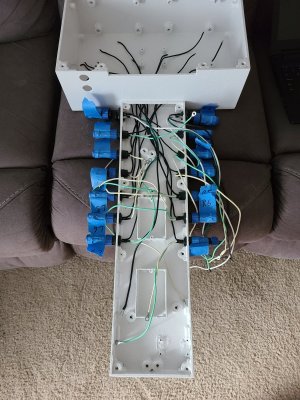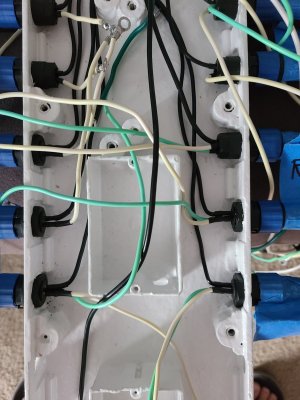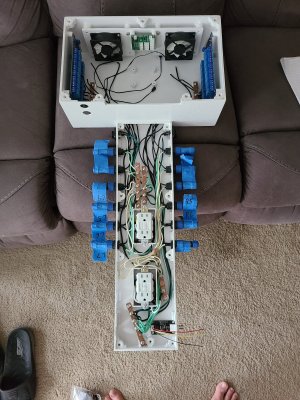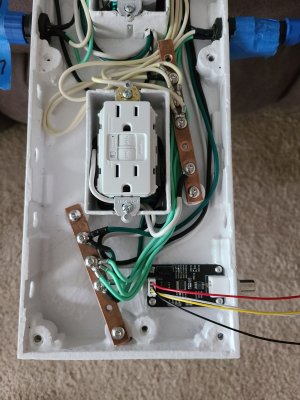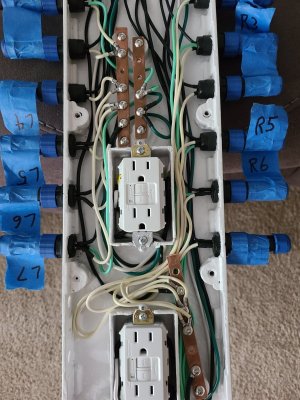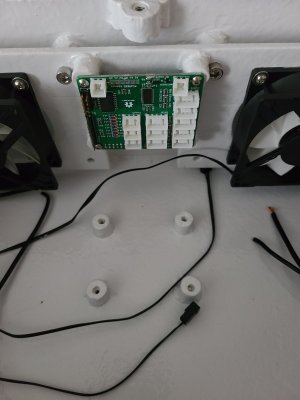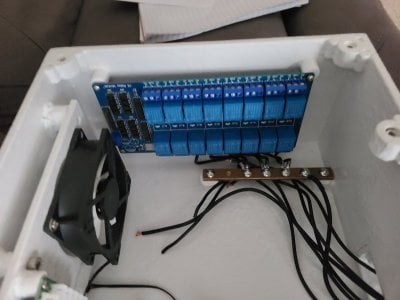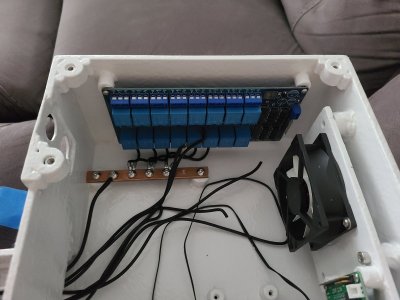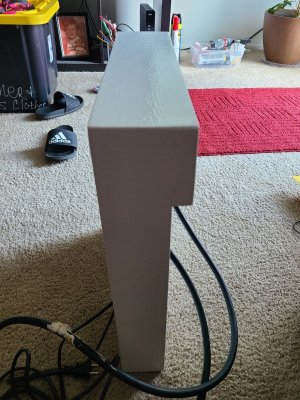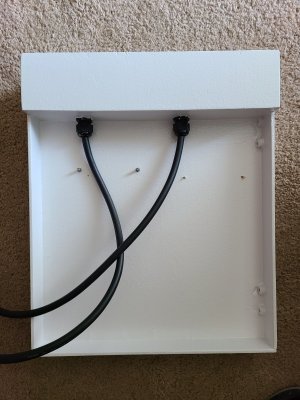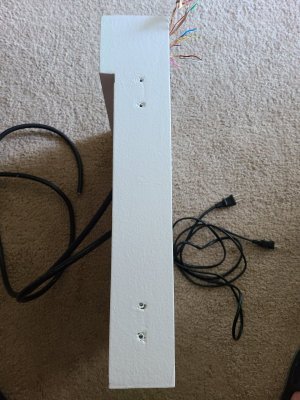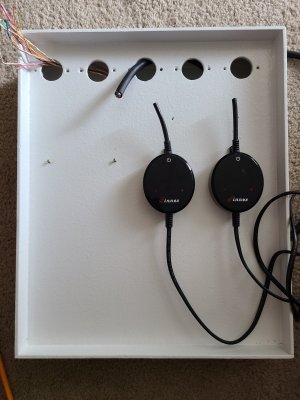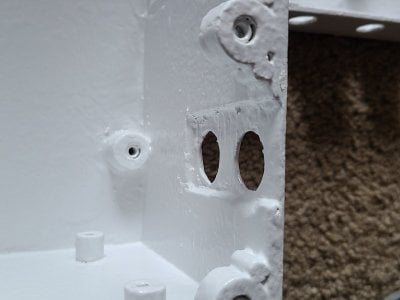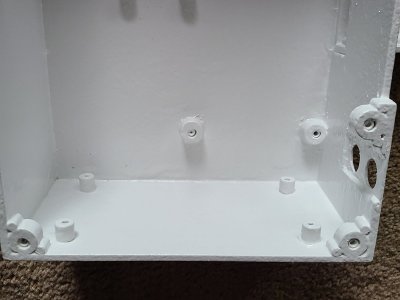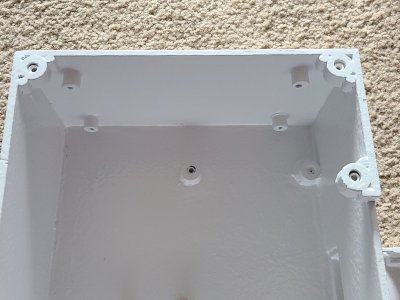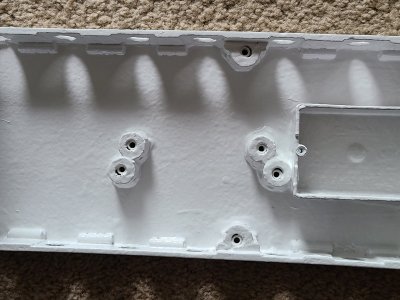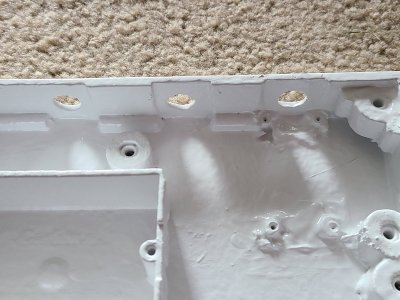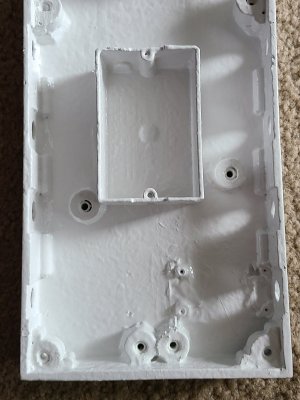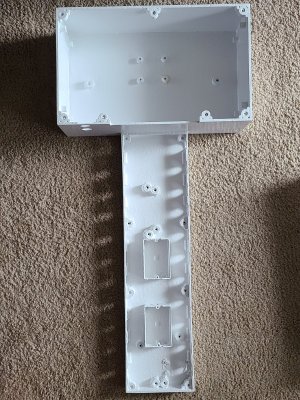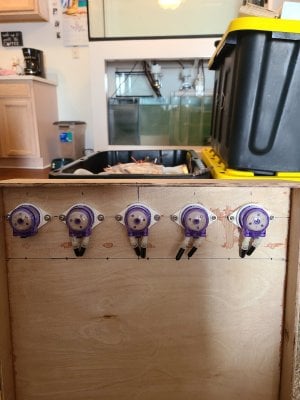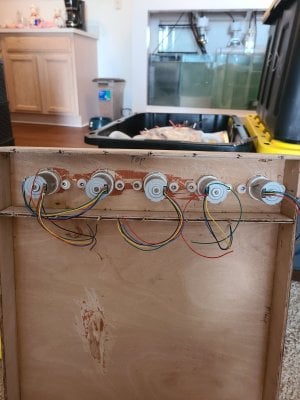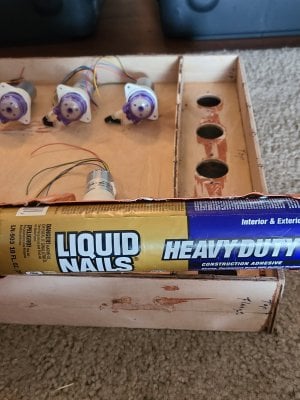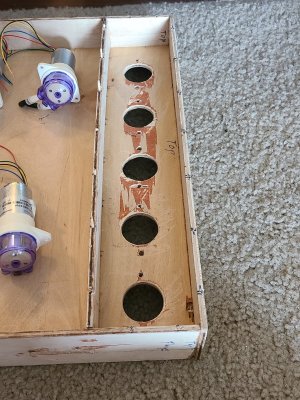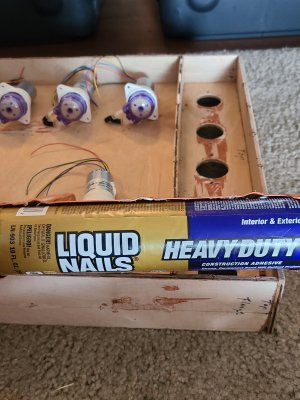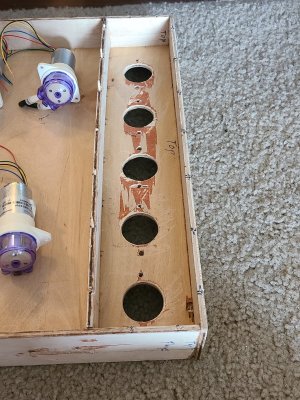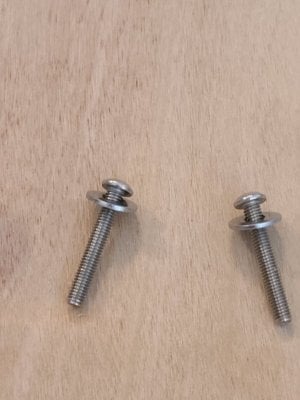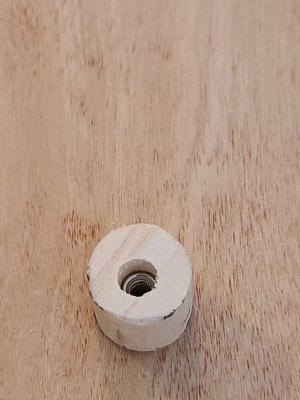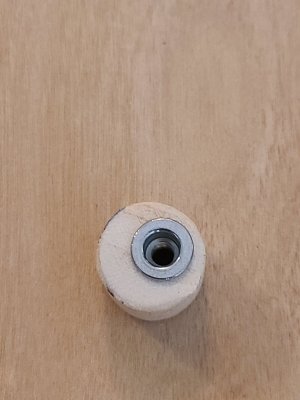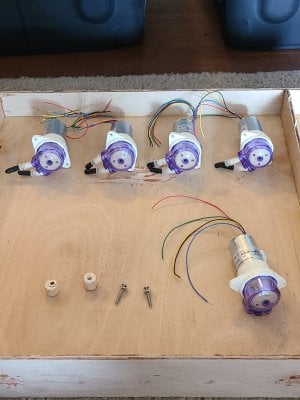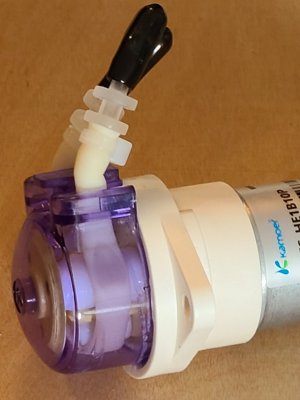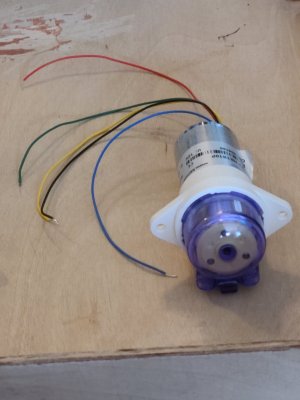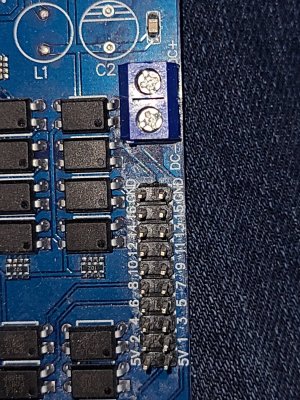I set up my 1st intended reef tank in November of '18. I decided to go with a 150 gallon because water parameters are supposed to be more stable and I love fish too so I could have a wider selection with a 5' tank.
I realized shortly after setting up this tank that my attempt at a budget build was fraught with issues. I had an ATO running RODI straight into sump without reservoir. The solenoid wouldn't consistently close or open so sometimes I was left with a flood and sometimes I was left with low water level. I had my lights controlled at full intensity with a plug in dial timer. I didn't set up any dosers either when started up. I found out how much of a pain it is to do water changes without a water mixing/changing station. Last but not least I had a major issue with the way i set up the wire routing. I was shocked, I had a powerhead power supply fall in the tank (thankfully unplugged), and I found out how corroded plugs can get being around warm saltwater.
Fast forward about 6 months and I had to move from Georgia to Michigan. During the move I chipped the top edge of the side of the tank. This presented an opportunity to rebuild the right way. I have a build thread for this rebuild here: https://www.reef2reef.com/threads/matts-sca-150-repair-and-redesign.659967/
I've been contemplating the need for a controller since I started buying the initial equipment. I looked into the 2 main controllers that were available at the time. They were both fairly expensive and I thought no way I'm spending that much to have a controller. As my plans for a controller evolved it became evident that the basic $900 controller wasn't enough to control what I wanted and I would have to buy extension. Reef-Pi came across my radar while exploring all there is to learn on Reef2Reef. When i first started looking at Reef-Pi there wasn't any plug and play circuitry being offered but now there are at least 2 to chose from. I decided to use the @Michael Lane Hat for the majority of my circuitry.
What I plan for my controller to control:
4 powerheads for on/off relay control
1 return pump for on/off relay control
2 light channels sunrise/sunset
Moonlight phases if that becomes part of a future release.
3 Fuge lights on/off
5 Kamoer doser pumps
5 level sensors for dosing containers
2 ground probes one in each tank
ATO pump controlled by 2 mechanical level sensors
Air pump for on/off relay control
1 mechanical level sensor for Phyto
2 Temperature sensors
2 Finnex digital heaters for on/off
Ph probe
3 solenoids RODI into mixing station
4 level sensors for mixing station hi/lo
5 solenoids for AWC
1 pump mixing station
My knowledge of electronics is good enough to connect wires and some soldering. I tried through board soldering with a basic iron with probably 80% good joints. I picked up a soldering station which is much easier to use. This station should bring me up to 98% when I will inevitably have to build some circuitry.
I realized shortly after setting up this tank that my attempt at a budget build was fraught with issues. I had an ATO running RODI straight into sump without reservoir. The solenoid wouldn't consistently close or open so sometimes I was left with a flood and sometimes I was left with low water level. I had my lights controlled at full intensity with a plug in dial timer. I didn't set up any dosers either when started up. I found out how much of a pain it is to do water changes without a water mixing/changing station. Last but not least I had a major issue with the way i set up the wire routing. I was shocked, I had a powerhead power supply fall in the tank (thankfully unplugged), and I found out how corroded plugs can get being around warm saltwater.
Fast forward about 6 months and I had to move from Georgia to Michigan. During the move I chipped the top edge of the side of the tank. This presented an opportunity to rebuild the right way. I have a build thread for this rebuild here: https://www.reef2reef.com/threads/matts-sca-150-repair-and-redesign.659967/
I've been contemplating the need for a controller since I started buying the initial equipment. I looked into the 2 main controllers that were available at the time. They were both fairly expensive and I thought no way I'm spending that much to have a controller. As my plans for a controller evolved it became evident that the basic $900 controller wasn't enough to control what I wanted and I would have to buy extension. Reef-Pi came across my radar while exploring all there is to learn on Reef2Reef. When i first started looking at Reef-Pi there wasn't any plug and play circuitry being offered but now there are at least 2 to chose from. I decided to use the @Michael Lane Hat for the majority of my circuitry.
What I plan for my controller to control:
4 powerheads for on/off relay control
1 return pump for on/off relay control
2 light channels sunrise/sunset
Moonlight phases if that becomes part of a future release.
3 Fuge lights on/off
5 Kamoer doser pumps
5 level sensors for dosing containers
2 ground probes one in each tank
ATO pump controlled by 2 mechanical level sensors
Air pump for on/off relay control
1 mechanical level sensor for Phyto
2 Temperature sensors
2 Finnex digital heaters for on/off
Ph probe
3 solenoids RODI into mixing station
4 level sensors for mixing station hi/lo
5 solenoids for AWC
1 pump mixing station
My knowledge of electronics is good enough to connect wires and some soldering. I tried through board soldering with a basic iron with probably 80% good joints. I picked up a soldering station which is much easier to use. This station should bring me up to 98% when I will inevitably have to build some circuitry.
Last edited:




